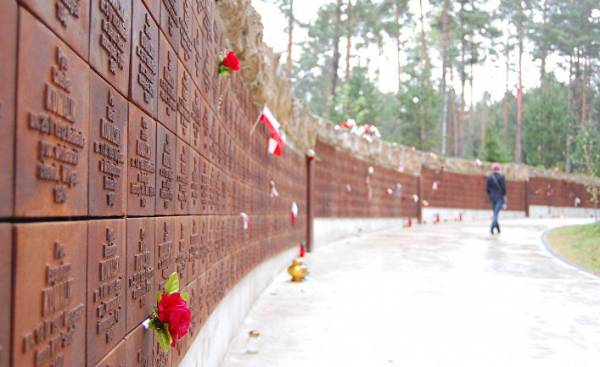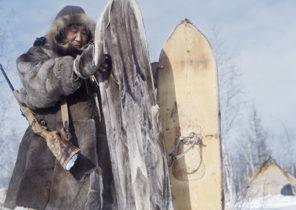
In a place where in 1940 he shot the Polish prisoners of war, the State Central Museum of contemporary history of Russia (Katyn Museum is one of its branches) is going to open at the end of year exhibition. Now before the entrance to the cemetery has installed two stand, reminiscent of the events that, according to Russia justifies Stalin’s decision. It refers to the destruction of more than 22 thousand of poles taken prisoner or arrested on the territory of Poland which in 1939 was occupied by the Red army.
Prior to this there were posters, which described the Soviet repression of 1930-40-ies. Now the tourists reported the tragic fate of red army soldiers who were in Polish captivity in the years 1919-1921.
According to local news portal Smoldaily.ru the text in the “updated” billboards reads: “according to reports, red cross reports and the reports of the Polish authorities, testimony of the American Association of Christian youth and other documents, the conditions of detention of prisoners in the camps were appalling. Damp and poorly heated barracks and huts, the bad and irregular meals, a scarcity of clothing and shoes, infectious diseases, harsh and cruel treatment of prisoners, the tyranny of the camp administration — all this has led to the deaths of tens of thousands of red army soldiers. On the exact number of dead, historians argue still”.
Find anti-Katyn
This argument is rooted in the end of 1980-ies, when Moscow began to admit that she was responsible for the Katyn crime. A member of the Russian Academy of Sciences, the historian Boris Nosov Gazeta Wyborcza says: “Perhaps somewhere in the Politburo or in the offices of the chiefs of the USSR Academy of Sciences held a meeting and came out to find anti-Katyn some Polish stain on the history of relations with Soviet Russia. Perhaps no meeting had no Secretary is not saying that you need to take retaliatory steps, but we here in Moscow grasp on the fly wishes of the authorities, feel that it may be useful to him. At the turn of the 1980s and 1990s in the air hung the idea of the anti-Katyn. We started writing about the war of 1920, first about the fate of the red army, which in those years was captured and allegedly destroyed in the camps. Said about 40 thousands killed, starved, died from lack of medication”.
The idea was picked up by many, particularly former Governor of the Kemerovo region Aman Tuleyev, who wrote an article about the brutal Polish officers, vparivali the bellies of innocent prisoners. However, one anti-Katyn was not enough. A few years ago, the poles tried to blame the fact that during the war with Napoleon in 1812, they captured and destroyed two thousand Cossacks. The idea was supported by Minister of culture Vladimir Medinsky, however, these events were too far to touch the souls of Russians, so the idea was abandoned.
The dispute about the monuments of the red army
It seemed that the dispute about the fate of prisoners of war of 1920, will be completed in a perfect way. Polish and Russian historians have produced and published in 2004, the collection of materials called “the Soldiers in Polish captivity in the years 1919-1922”. The documents proved that the prisoners were kept in very difficult conditions, however, Poland was not engaged in their targeted extermination.
Scientists have differed in estimates of the number of victims. The poles talked about 16-18 thousand, the Russians about 18-20 thousands. Later, the historian Gennady Matveev said about 28 thousand dead. He referred to the “new facts” but did not specify which ones.
This “later” came after the “orange revolution” in Ukraine, in which Moscow accused Warsaw, and after the Russian side closed the investigation of the Katyn case, and to classify its materials.
One could expect that Russia will remember about the anti-Katyn in response to the decision to remove Warsaw from the Polish cities of monuments to soldiers of the red army, which angered Moscow. Stands, proving that criminals have had a reason to commit his crime, which appeared at the gate on the way to the place of execution of poles, is probably a signal about the willingness of Russians to take further retaliatory steps. They want to remind the poles that Russia has an opportunity to answer, she’s got hostages resting in Russian soil of Polish prisoners of war.







